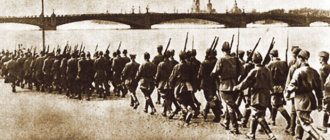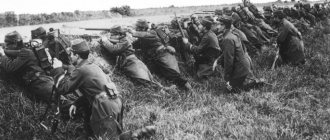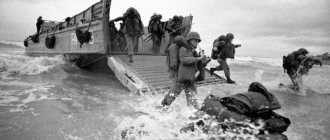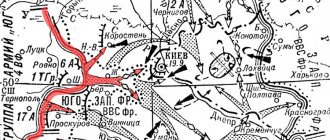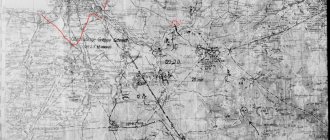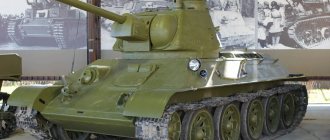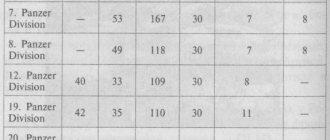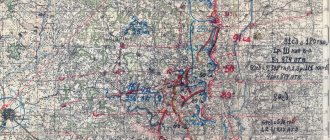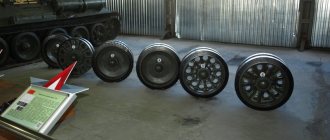War: Leningrad region 1941–1945
Vladislav Kraev, May 3, 2020, 20:58 - REGNUM The Leningrad region (in 1941 it partially included the territory of the current Novgorod and Pskov regions) during the Great Patriotic War became the field of the longest battle in the history of this war - the Battle of Leningrad. During the war, the population of the Leningrad region decreased by almost 62%. Behind these figures are people killed and tortured by the Nazis and their henchmen, thousands burned along with village residents, young people driven into slavery, old people who died of hunger and cold.
The commander of the 136th Infantry Division, Major General Nikolai Simonyak, at the observation post. The photo was taken during the first day of the operation to break the blockade of Leningrad (Operation Iskra). January 12, 1943
Most of the Leningrad region was occupied by the troops of Nazi Germany and its allies, subjected to severe devastation, the civilian population was exterminated and forcibly sent to Germany. At the same time, the part of the Leningrad region adjacent to Ladoga, together with Leningrad, found itself in an almost 900-day enemy blockade, which became one of the most monstrous war crimes. In the occupied city of Pushkin, which was then part of the Leningrad region, the Jewish population was massacred. In the northeast, Finnish troops became the occupiers, sending the Russian population to concentration camps. The complete liberation of the region from enemies occurred only in the summer of 1944.
Before the start of the Great Patriotic War, the Leningrad region included twelve cities of regional subordination: Borovichi, Volkhov, Krasnogvardeysk (now Gatchina), Luga, Novgorod (now Veliky Novgorod), Oranienbaum, Pskov, Sestroretsk, Slutsk (now Pavlovsk), Staraya Russa, Teriyoki ( now Zelenogorsk), Shlisselburg, as well as 72 districts. As a result of the Soviet-Finnish war of 1939−1940, the current Vyborg and Priozersky districts became part of the Leningrad region. On the territory of the present Leningrad region, the first on the path of the advancing enemy was the southwestern Luga region. In July 1941, the Soviet command, the forces of the Red Army and the civilian population of Leningrad and the Leningrad region created the Luga defensive line here. It was he who took over and managed to repel a tank attack from the advanced units of the Wehrmacht.Digging team G.S. Petrov on the construction of a section of the Luga defensive line. 1941
The S-65 "Stalinets" tractor and the 122-mm A-19 gun, captured by German troops near Luga. 1941
Soviet civilians at the construction of the Luga border. In the background you can see a Red Army column moving along the road. 1941
The self-sacrifice of the defenders of the Luga line - Red Army soldiers and militias - made it possible to delay the German advance on Leningrad for three weeks. During this time, the city on the Neva was able to prepare industry and infrastructure for defense, mobilize human and material resources, remove, cover and hide priceless cultural monuments.
Soviet pilots V. Kalmykov, M. Sapronov and V. Stepanov near the I-15bis aircraft. 1941
German soldiers on the street of an occupied village southeast of Leningrad. 1941
At the Luga line, the Nazis lost more than 10 thousand soldiers and officers, hundreds of tanks and dozens of artillery batteries. After the Nazis captured the Luga region in August 1941, many local residents and surrounded Red Army soldiers became partisans, and 17 partisan detachments and groups were created behind enemy lines. In the occupied zone with an area of 10 thousand square meters. kilometers, the so-called partisan region arose. Soviet power was restored in this territory, schools and other institutions operated.
If in the summer of 1941 there were about 18 thousand fighters in the partisan detachments, then by January 1944 a well-armed partisan army, consisting of 13 partisan brigades, was operating in the region. The total number of partisans was 35 thousand people. During the 32 months of the war, partisan detachments of the Leningrad region destroyed more than 100 thousand enemy fighters; over 1,000 locomotives and 18,000 carriages were disabled; 201 railway and 1,180 highway bridges were blown up, and 2,153 kilometers of telegraph and telephone communication lines were destroyed. 13,500 partisans died in battles with the Nazi invaders.During the war, the partisan region not only inflicted great damage on the enemy and kept the invaders at bay, but also delivered food across the front line to starving Leningrad.
Soviet commanders carry rifles along 25th October Avenue in besieged Leningrad. 1941
On the battery of anti-aircraft guns 3-K on the Spit of Vasilyevsky Island in besieged Leningrad. 1942
On September 8, 1941, the siege of Leningrad began. On this day, German troops captured the city of Petrokrepost (Shlisselburg) at the source of the Neva and, together with Finnish troops in the north, closed the land blockade ring around Leningrad. On the same day, German aircraft carried out a massive bombing of Leningrad, as a result of which residential buildings were destroyed and the Badaevsky food warehouses were burned down.
Construction of a railway on Lake Ladoga. Leningrad region. 1942-1943
Driving piles for an ice overpass across Lake Ladoga. Leningrad region. 1942
Together with Leningrad, a small territory east of the city, stretching to Lake Ladoga, fell into the blockade ring. On September 12, 1941, the evacuation of Leningraders began across the lake by passenger and transport ships. In the 20th of November 1941, with the help of local residents - women, teenagers, old people - a highway was built through the forests. In early December, when the lake was covered with the first, still weak ice, Military Highway No. 102 began operating through Ladoga - later known as the Road of Life, connecting Leningrad with the “mainland”. On it, under enemy shelling and bombing, children, women, old people, dying of hunger and wounded residents were taken out of Leningrad, and on return flights grain and other food, fuel, medicine, and raw materials for industry were transported to Leningrad.
In the spring on the “Road of Life”. Ladoga lake. 1942
Unloading food for besieged Leningrad from a Li-2 transport aircraft. 1942
Piers of Osinovets harbor. Carrying the wounded for boarding transport departing for Novaya Ladoga. Leningrad region. 1941
In the summer, during the blockade, the Road of Life did not stop its work: trucks brought people to the Ladoga piers, from where small ships and tugboats took them to the shore of Ladoga, which was not occupied by the enemy. German planes mercilessly bombed and sank transports with people, and the ships of the Ladoga flotilla responded with fire.
On the territory of the present Kirov district of the Leningrad region, one of the most tragic pages was written in the history of the war. Here, on a small plot of land on the left bank of the Neva, occupied by the enemy, Soviet troops managed to create a small bridgehead, called the Nevsky Piglet. The bridgehead opposite Nevskaya Dubrovka was held by troops of the Leningrad Front from September 1941 to April 1942. It was then retaken by the Red Army in September 1942 and held until January 1943, when the siege of Leningrad was broken. More than 60 thousand Soviet soldiers died in the battles on the Nevsky patch. The feat of the defenders of the Neva stronghold became a symbol of unparalleled courage and heroism.Construction of a wooden bridge across the river. Neva in the area of the impending breakthrough of the blockade of Leningrad. Vsevolozhsk district. Leningrad region. December 1942
Construction of a wooden bridge across the river. Neva in the area of the impending breakthrough of the blockade of Leningrad. Vsevolozhsk district. Leningrad region. December 1942
The near rear of Soviet units in the area where the blockade of Leningrad was broken. 1943
The blockade of Leningrad was broken on the territory of the current Kirov district of the Leningrad region on January 12-18, 1943 during Operation Iskra, carried out by troops of the Leningrad and Volkhov fronts. The operation began on January 12, 1943 with a massive air and artillery strike by Soviet troops on German positions. After this, tanks and infantry of the Leningrad Front moved across the ice of the Neva from the right bank towards the enemy. At the same time, the 2nd Shock Army of the Volkhov Front launched an offensive from the east north of Sinyavino. Its goal was workers' settlements, converted by the Germans into fortified strongholds.
On January 18, 1943, strike groups of the Leningrad and Volkhov fronts met near the southern shore of Lake Ladoga, creating a narrow corridor connecting Leningrad by land with the rest of the country. The defeated German units fled through the forests, throwing away their weapons. On the same day, the city of Shlisselburg, covering the entrance to the Neva from Lake Ladoga, was liberated from the Nazis.